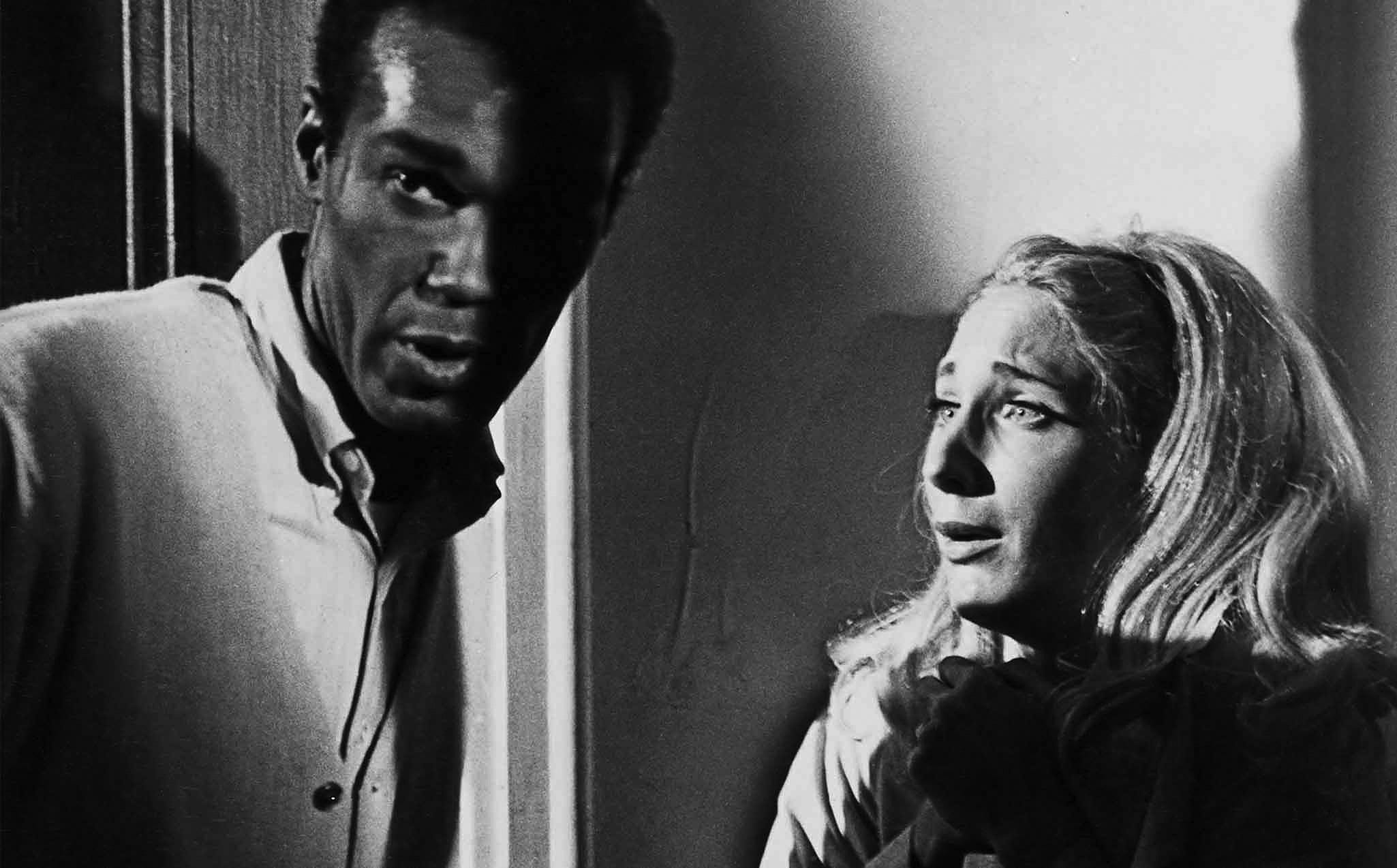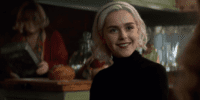So many of us can pinpoint exactly the moment when our minds were blown wide open and we saw the world different than we did before; iconic moments scattered throughout the pop culture landscape—forever burned into our collective conscious. Everyone of a certain age remembers where they were the night The Beatles played Ed Sullivan in 1964. The kids who stood in line around the block to see Star Wars in 1977 can recount every second of a day that helped shape their DNA. These collective moments that millions of us share help form who we are and change what we understand about the world. That moment for me came when I popped in a home recording of the immortal Night of the Living Dead by writer, director, producer, editor, and all-around badass George A. Romero.
I was only 11 years old and the year was 1996; I had just seen Scream at the local movie theater (that obviously didn’t care about that R rating) and from that moment on I knew I was a horror fiend. I spent countless hours at my local mom and pop video rental store FutureWorld Video (Rest in Peace) renting everything in the horror section that I could get my hands on. My decisions were most always guided by how cool the cover of the VHS box was—Night of the Living Dead was special. An older guy, a biker actually, who I will forever owe a debt saw how impressed I was with his homemade horror collection and made me a copy when he found out I had not seen Romero’s landmark debut. As soon as I got home, I popped the tape in the VCR and my cinematic journey truly began.

George Romero was punk rock before there was a word for it; he ran a successful television advertising company for around a decade when he decided to make Night of the Living Dead. He did this with a DIY ethos and lived in a time when it was possible to successfully work outside the Hollywood system. The film is a complete reflection of its times. Duane Jones as a black lead in 1968 is nothing short of revolutionary. Romero always claimed that he was simply the best actor that auditioned for the role and that in Night he wasn’t consciously trying to talk about race; it just bled through onto the screen.

Those who didn’t grow up in the late ’60s may need a little context to get just how that bleed-through could even happen. The Vietnam War saw bloody new heights with instances like “The Tet Offensive” and the “Mai Lai Massacre”, both Bobby Kennedy and Martin Luther King Jr. were assassinated, the civil rights struggle seemed to be devolving into more violence as more black people were killed and dehumanized, the Chicago riots at the DNC in regards to police brutality, etc., etc…
Those are just a few of the horrors that people who grew up in the late ’60s had to face. Good art can’t help but often reflect the world in which the artist actually lives. This misanthropic outsider from Pittsburgh was about to make a film that held up an ugly mirror to America itself. I was exposed to so many ideas that I didn’t even understand on that first initial viewing of Night of the Living Dead. It was the first film that made me question the status quo—even at the young age. I got that whoever made this insane film was trying to tell me that something was seriously wrong about the world…and I think they expected me to do something about it.
For the first time, I found myself questioning the world around me and the systems that are in place. How would we treat each other if the dead actually did come back? Romero made me wonder if we would work together to survive and somehow carry on, or if we would slowly and surely betray each other to the point of extinction. I had never seen a horror film where the creatures weren’t the biggest thing to fear. It’s a big enough problem that the entire cast is trapped in a farmhouse surrounded by the walking dead, but the bigger drama happens inside. Humans really are the monsters lurking in the shadows. The power struggle between the bigoted traditional white family man and the outspoken younger black man is emblematic of what many whites feared was actually happening in the real world anyway.
Romero also made me question authority in all of its forms. Both Night and sequel Dawn of the Dead (1978) show an unflinching look at the abuses of the police as an institution in this country. I was and still am disturbed by the opening action sequence in Dawn. A group of elite police officers storm a housing project, killing innocent people and the undead alike indiscriminately; it looks and feels like urban warfare. At least one of the cops stuck in my brain as sinister in his glee as he murdered anyone there that crossed his path, shouting racial epithets along the way. I heard author Max Brooks on Eli Roth’s History of Horror lament that if Easy Rider was the birth of the 60s counterculture than Dawn of the Dead was its death knell.

Dawn was more ambitious in scale than Night was and luckily Romero made a partnership with Italian horror maestro Dario Argento to secure funding. This gave him room to paint on a much larger canvass…blood red, of course. Dawn of the Dead doesn’t just take on the institutions that make up western culture—it indicts western culture itself; the black humor of the film isn’t lost on anyone. This film’s lead, again black, is horror legend Ken Foree (From Beyond, The Devil’s Rejects); this time the choice was more conscious to the director. The only difference between people driven by America’s consumer culture and an undead zombie is a heartbeat according to Romero’s sequel. By the time I saw it I was a little bit older—maybe 13—and I was more than tuned in to exactly what my old friend George was trying to send through the airwaves.
One thing all of Romero’s films have in common is that you are a fool to trust the government or law enforcement to save you when the world falls apart. There is a loud message screaming at you during these movies that no one is coming to help and that grabbed a hold of me and shook me to my core. To be honest, the idea still does. If Night and Dawn had a lot to say about society and a bubbling lack of trust between the people and the institutions that supposedly serve them, Day of the Dead (1985) completed the trilogy by showing humans mostly wiped out by the zombie apocalypse, fighting underground amongst themselves between surviving U.S. army and a group of scientists desperately still searching for a way to understand the zombie epidemic.

Cpt. Rhodes (Joe Pilato) and his group of Army cronies still run the show in a secluded underground bunker literally at the end of the world. The film takes the black comedy of Dawn and tests the audience to see how bleak they will go and still laugh with the joke. These military goons are still saluting each other, following rank, keeping to their routine; scientists are equally as useless as they toil away with captured zombies. The discovery of the zombie’s evolution really does nothing to benefit the actual humans—it only serves to highlight that there is even less of a difference between the living and the undead. It’s apparent that, to put it delicately, humanity by this point is in a dire situation; humans will cling to the things that comforted them, that made them feel whole. It’s easy to see Day of the Dead is a middle finger to the dehumanization that can happen in the Army during war. That would be unfair. The real story, and comedy (or tragedy) of it all, is these two groups of people are each just playing parts, waiting for the undead hammer to fall.
Quentin Tarantino once said the A in George A. Romero stood for “an absolute genius,” and I would be the last person to argue with him on this. George was both a genius and an artist, but he would cringe if you told him that. He often called himself a “meat and potatoes” director and laughed off comparisons to Alfred Hitchcock; what he did with a camera also changed the way I thought about film. The opening to Night of the Living Dead and his surrealistic vampire (or is it?) film Martin (1978) are stylistic exercises in silent tension building. Go back and watch the opening train sequence from Martin or the infamous opening to Night of the Living Dead on mute and they both completely work. George didn’t go to film school, he was making this up as he went along. He just had a sense for what worked and what didn’t—put it in more academic terms and he would just shrug his shoulders. Above all else, he was a work horse who just wanted to tell stories; he didn’t want his name to be held up with the ranks of Hitchcock and Kubrick, but his Dead trilogy and Martin actually do warrant such comparisons.
For a kid from the coal fields, becoming a famous Hollywood studio director can feel like the pipe dream that it more than likely is. George A. Romero showed me—especially with his original Dead trilogy—that I didn’t have to do that to become a filmmaker. I could just get some friends together and shoot a movie. Is it easy? No. George Romero’s filmography is full of projects that didn’t quite come together the way that he would have envisioned, but for most of his career he managed to make the types of movies he wanted to make with the people he wanted to make them with. He accomplished this on his own with the help of family and friends and that is what stuck with me more than anything. George’s lasting legacy will always be that if you want to do it, just go for it. There’s always a different way to try and get things done—if not then go out and make it up; nothing more punk rock than that to me. George A. Romero is dead. Long live George A. Romero.


